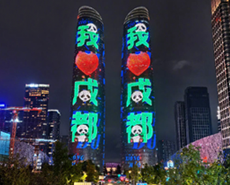
Metalink: From refractory metal to super-alloy industry chain progress road
----Interview with Buyang Ma
Executive Director
Metalink Special Alloys Corp.
Executive Director
Metalink Special Alloys Corp.
Metalink Special Alloys Corp. was listed in March 2016 in the national small and medium-sized enterprise stock listing system, mainly engaged in aviation, aerospace, energy and other areas of high-temperature alloy research and development. In 2017, it was awarded with Jiangsu province 100 most promising technology enterprises. In 2018, it was awarded as gazelle enterprise in high-tech zone of south Jiangsu province and became Nanjing Postdoctoral Innovation Practice Base, Nanjing Engineering Technology Research Center, Nanjing Enterprise Technology Center, etc at the same year. A joint research and development center was inaugurated in Nanjing with the Beijing University of Science and Technology (state key laboratory of new metal materials) in April, 2019. At present, they are cooperating with two state key laboratories of the Beijing University of Science and Technology and Jiangning Development Zone Government to set up a research institute of new metal materials, vigorously carrying out research and development of new metal materials and high-tech enterprise incubation.
Asian Metal: Hi Mr. Ma, could you please introduce your company in brief?
Mr. Ma: Jiangsu New Resource Material Technology Co. Ltd and Nanjing New Material International Metal Co., Ltd began to produce and trade with refractory metal- based alloy and pure metal material products since the middle of 1990s. Metalink Special Alloys Corp. was set up in 2007 and undertakes the important task of further development of the two companies. As one of the national high and new technology enterprise, we mainly focus on the development, production and sales of rare refractory metals and their high-end special alloy materials. Our plant mainly focuses on refractory metal field since 1993 with the experience and technical research and development ability of the whole industry chain of rare refractory metals and alloy materials. The company currently has 33 national patents, including 16 invention patents. We continue to invest in research and development and have made many important scientific research achievements.


Asian Metal: What are your main products? How about the application areas and prospects of each material? Which areas would be the focus of future development?
Mr. Ma: With the help of more than 20 years of technical experience, our company's main products cover the whole industrial chain from mineral processing to special intermediate alloys, high purity rare metals to high-temperature alloy production. Our main products are special intermediate alloy, high purity compound, high purity elemental metal, high temperature alloy (super-alloy) as the representative of the special rare metal alloy materials and so on. Intermediate alloy and high purity metal are mainly used in downstream super-alloy, special alloy materials in aerospace field, smelting and casting alloy of special steel, etc. Super-alloys are mainly used in engines and gas turbines in aviation, aerospace, navigation and energy industries, as well as in other fields such as automobiles and special equipments. China's aviation and aerospace and other high-end sectors are in rapid development, the future growth potential and development space is large. In the field of special alloy new materials in these fields, we need to continue to carry out scientific research, and to solve the technical bottleneck, we need to stick to the spirit of running marathon for a long time.


Asian Metal: Why did ferroniobium prices keep going up while since last Q4? What about the market in H2, 2019?
Mr. Ma: In late September and October, 2018, dampened by higher vanadium nitrogen alloy prices, many steel mills chose to purchase ferroniobium to replace partial vanadium nitrogen alloy. At the same time, many vanadium traders invested more money on ferroniobium market to avoid the high risk of increasing vanadium prices, which led to the shortage in the domestic ferroniobium spot market. However, the vanadium nitrogen alloy prices decreased again in early November,2018 and decreased by around 50% until late December. As a result, the ferroniobium market began to remain stagnant in late November with decreasing prices. In early 2019, the vanadium nitrogen alloy prices reached the bottom periodically and the supply of Brazilian ferroniobium became enough again. Vanadium and niobium prices also slowly formed a situation of mutual restraint. During this period, the significant impact of the new steel standards cannot be ignored.
On the other hand, the trading conflict between China and the USA also dampened tantalum and niobium prices as the USA increased the tariff for Chinese goods in 1st September, 1st October and 15th December last year. The changes of policy brought the changes of demand. For most Chinese domestic tantalum and niobium companies, the export market could not support the prices any more. For most niobium smelters in China, some domestic ferroniobium producers would consume part of niobium oxide. However, some steel mills whose impurity content requirement is not very high also begin to use imported ferroniobium to replace domestic ferroniobium due to the development of production technology. As the quantity, production cost and sales price for imported ferroniobium remain stable, large amount of niobium oxide could not be consumed by domestic ferroniobium producers, which is one of the main reasons for decreasing niobium prices.
We predict that the niobium prices would remain at a low level in Q4, 2019 due to the poor demand from end users. Tantalite prices would increase according to the limited supply from African market and the alternative mineral product price fluctuation brings the effect of conversion under comparative benefit. In addition, many Chinese smelters would come back to the market and make more purchases for the future production, which would support tantalite prices hovering at prices higher than USD50/lb Ta2O5.
















